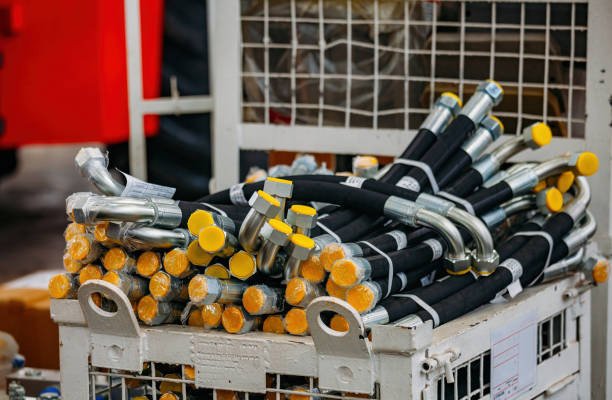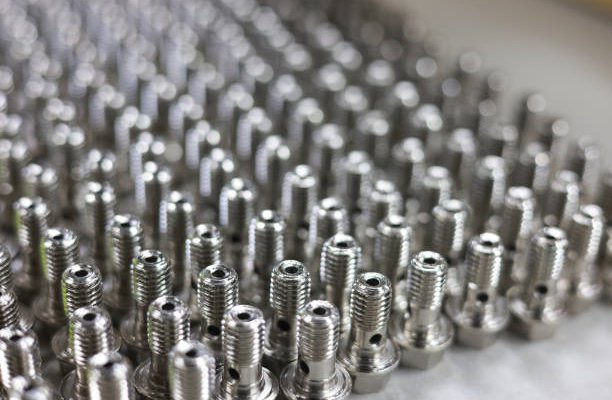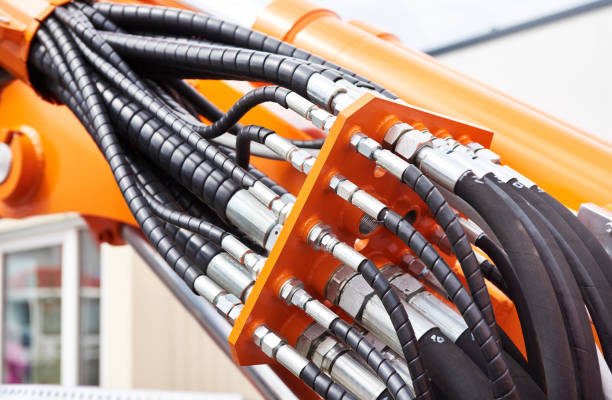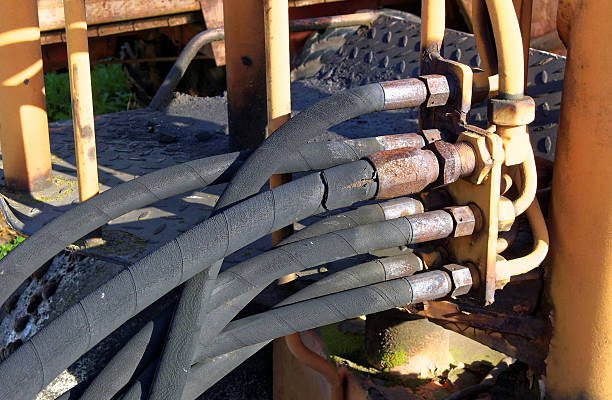Introduction: Why Hose Standards Matter
Hoses may look like simple rubber or reinforced tubes, but they play a vital role in the performance and safety of countless systems. From high-pressure hydraulic circuits in heavy machinery to chemical transfer in industrial plants, hoses are critical connectors that move fluids reliably and safely.
But here’s the catch: using the wrong hose standard can be a recipe for disaster. Imagine a hydraulic excavator with hoses not rated for the system’s maximum pressure—the result could be sudden hose bursts, hydraulic fluid spraying at extreme pressures, expensive equipment downtime, and even life-threatening injuries.
That’s why hose standards exist. They set specific design, construction, and performance requirements for hoses in different applications. By following the right hose standard, you ensure:
- System safety – Preventing leaks, ruptures, and accidents.
- Regulatory compliance – Meeting industry-specific and regional laws.
- Operational efficiency – Reducing energy loss and improving fluid flow.
- Longevity – Extending hose life, lowering replacement costs, and reducing downtime.
This guide will walk you step by step through how to choose the right hose standard for your system, covering everything from global standards to practical selection tips and common mistakes to avoid.
Understanding Hose Standards
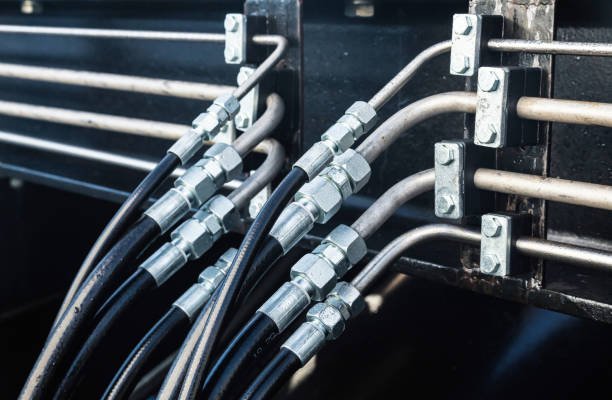
Before choosing the right hose, you need to understand what standards are available and why they matter.
What Are Hose Standards?
Hose standards are internationally recognized specifications that outline how hoses should be manufactured, tested, and labeled. They ensure hoses can handle the operating pressures, temperatures, and environments they are exposed to in the real world.
For example, a hose labeled SAE 100R2AT isn’t just a random number—it tells you the hose construction type, pressure rating, and intended use according to the Society of Automotive Engineers (SAE).
These standards typically define:
- Materials used (rubber, thermoplastic, PTFE, reinforced steel braid, etc.)
- Working and burst pressures
- Temperature operating range
- Testing methods (impulse testing, pressure testing, burst testing)
- Fitting compatibility
- Marking and labeling requirements
Key Global Hose Standards
There are several recognized hose standards across the globe, including:
- SAE (Society of Automotive Engineers) – Predominantly used in North America, focusing on hydraulic hoses.
- ISO (International Organization for Standardization) – Global standards recognized in nearly every industrial sector.
- EN (European Norms) – Required in Europe for CE compliance, widely used in industrial hose systems.
- JIS (Japanese Industrial Standards) – Popular in Japanese-manufactured equipment and globally for imports/exports.
Each of these has unique requirements, which means selecting the right one depends on your system’s design, region, and operating conditions.
Differences Between Industrial and Hydraulic Hose Standards
It’s important to note that not all hoses are created equal. The two primary categories are:
- Industrial hoses – Designed for air, water, steam, chemicals, and general fluid transfer. They don’t always require high-pressure ratings but must handle diverse chemicals and environmental conditions.
- Hydraulic hoses – Built for high-pressure, high-impulse systems where fluid power drives heavy machinery, construction equipment, or automotive applications. These hoses have reinforced layers to withstand extreme conditions.
Choosing the wrong category—for example, using an industrial hose where a hydraulic hose is required—can lead to immediate system failure.
Factors to Consider Before Choosing a Hose Standard
Even with a clear understanding of hose standards, the real challenge lies in choosing the right one for your specific system. A poor choice can shorten equipment life, create unsafe conditions, and drive up costs.
Here are the most important factors to evaluate:
1. Pressure Ratings and Safety Margins
Every hose has a maximum working pressure and a burst pressure (typically 4x the working pressure). Always select a hose rated above your system’s peak operating pressure to build a margin of safety.
2. Fluid Compatibility
Not all hoses work with all fluids. For example:
- Petroleum-based hydraulic fluids require nitrile or neoprene hoses.
- Synthetic or biodegradable fluids may require specialized elastomers or PTFE.
- Corrosive chemicals (acids, solvents) demand chemical-resistant linings.
Always cross-check with compatibility charts provided by manufacturers.
3. Temperature Range
A hose’s performance can degrade quickly if exposed to extremes. Check both:
- Fluid temperature (hot hydraulic oil, steam, etc.)
- Ambient temperature (cold storage environments, desert heat)
Failure to consider temperature ranges can result in cracking, hardening, or premature hose failure.
4. Flexibility and Bend Radius
If your system involves sharp turns or compact installations, bend radius is critical. Exceeding the minimum bend radius puts stress on the reinforcement layers and drastically shortens hose life.
5. Environmental Conditions (UV, ozone, chemicals, abrasion)
Outdoor hoses exposed to sunlight, ozone, saltwater, or abrasive surfaces need specialized coverings. For instance, mining hoses may require abrasion-resistant outer layers, while offshore hoses need saltwater resistance.
Common Hose Standards Explained
Hose standards may seem like a jumble of acronyms—SAE, ISO, EN, JIS—but each plays a vital role depending on your region and application. Here’s a closer look:
SAE Standards (Society of Automotive Engineers)
- Region of Use: Predominantly North America.
- Focus: Hydraulic hoses, especially for construction, mining, automotive, and agricultural machinery.
- Examples:
- SAE 100R1AT: Single steel-wire braid, medium pressure.
- SAE 100R2AT: Double steel-wire braid, high pressure.
- SAE 100R12: Spiral wire reinforced, very high pressure.
- Why It Matters: SAE standards are trusted worldwide for heavy-duty hydraulic systems that demand consistent performance under high pressure.
ISO Standards (International Organization for Standardization)
- Region of Use: Global.
- Focus: Hydraulic and industrial hoses for international trade and cross-border manufacturing.
- Examples:
- ISO 1436: Rubber hoses for hydraulic applications.
- ISO 18752: Pressure-based classification system for hydraulic hoses.
- Why It Matters: ISO standards help ensure a hose made in Europe can be safely used in Asia or North America without compatibility issues.
EN Standards (European Norms)
- Region of Use: Europe (mandatory for CE compliance).
- Focus: Industrial hoses for air, water, steam, chemicals, and hydraulics.
- Examples:
- EN 853, EN 856, EN 857: Hydraulic hose equivalents to SAE standards.
- EN 12115: Hoses for chemical transfer applications.
- Why It Matters: Essential for businesses operating within the European Union, ensuring regulatory compliance and safety.
JIS Standards (Japanese Industrial Standards)
- Region of Use: Japan and countries importing Japanese equipment.
- Focus: Hydraulic and industrial hoses in heavy machinery, robotics, and automotive sectors.
- Why It Matters: If you’re using Japanese-manufactured equipment (like Komatsu excavators), hoses and fittings will almost always follow JIS standards.
In short:
- Use SAE in North America,
- ISO for global interoperability,
- EN in Europe, and
- JIS when working with Japanese equipment.
Step-by-Step Guide: How to Choose the Right Hose Standard
Selecting a hose isn’t guesswork—it’s a structured process. Here’s how to ensure you get it right:
Step 1: Identify Your System Requirements
Ask: What fluid is being transferred? What is the operating pressure and temperature? Is the system mobile (hydraulic excavator) or stationary (industrial plant)?
Step 2: Match Pressure and Flow Needs
Choose a hose rated at least 25% above your system’s maximum working pressure. Check flow rates to avoid pressure drops or turbulence inside the hose.
Step 3: Select Based on Regional Regulations
- North America → SAE
- Europe → EN
- Global operations → ISO
- Japanese imports → JIS
Following regional standards avoids compliance issues during inspections and prevents warranty disputes.
Step 4: Ensure End-Fitting Compatibility
A perfect hose is useless if the fittings don’t match. Threads, sealing methods, and dimensions differ across standards. For instance, SAE JIC fittings won’t directly match JIS fittings without adapters.
Step 5: Consult Manufacturer Recommendations
Reputable hose manufacturers (e.g., Gates, Parker, Eaton) provide compatibility charts and selection tools. Always cross-check with their data rather than relying on guesswork.
Common Mistakes to Avoid When Selecting Hose Standards
Even experienced engineers can make errors when choosing hoses. Avoid these pitfalls:
1. Ignoring Pressure Ratings
A hose might physically fit your system, but if it can’t handle the pressure, it’s a ticking time bomb. Always confirm working and burst pressure.
2. Using the Wrong Material
Example: Using a standard nitrile hose for aggressive solvents will cause swelling, cracking, and eventual failure. Always check chemical compatibility.
3. Overlooking Certification Requirements
In regulated industries (oil & gas, chemical processing, food and beverage), uncertified hoses may result in legal liability, failed inspections, or even shutdowns.
4. Mixing Standards Without Adapters
Trying to connect an EN-standard hose to SAE-standard fittings without the proper adapters can cause leaks and unsafe connections.
5. Cutting Costs with Non-Standard Hoses
Cheaper, non-standard hoses may save money upfront but can fail prematurely, costing far more in downtime and repairs.
Benefits of Choosing the Correct Hose Standard
Choosing the right hose standard isn’t just about meeting regulations—it directly impacts safety, performance, and cost-efficiency. Here’s how the right choice benefits your system:
1. Improved System Safety
The top priority of any hose standard is safety. Hoses that meet certified standards undergo rigorous testing for pressure, burst resistance, and impulse cycles. This ensures they won’t fail unexpectedly under demanding conditions.
- Prevents leaks that could cause fires (fuel/oil lines).
- Reduces risk of high-pressure fluid injection injuries.
- Protects workers and equipment from hazardous spills.
2. Enhanced Efficiency and Performance
A properly selected hose ensures smooth fluid transfer, with minimal pressure loss and energy waste. For hydraulic systems, this translates into:
- Better machine response times.
- Reduced energy consumption (since pumps don’t overwork to maintain pressure).
- Consistent performance across varying conditions.
3. Reduced Maintenance and Downtime
Non-standard hoses often wear out quickly, crack under stress, or degrade in chemical environments. By contrast, certified hoses:
- Last longer in demanding environments.
- Require fewer replacements.
- Reduce costly equipment downtime caused by hose failures.
4. Regulatory Compliance
In industries like oil & gas, aviation, food & beverage, and pharmaceuticals, using the correct hose standard is mandatory. Compliance not only avoids legal issues but also builds customer trust and ensures quality assurance.
Applications of Hose Standards

Hose standards are not theoretical—they are applied daily across multiple industries. Here are some real-world scenarios:
Automotive Industry
- Fuel hoses: Must meet SAE J30 standards for fuel resistance.
- Brake hoses: Follow strict FMVSS (Federal Motor Vehicle Safety Standards) or ISO standards to ensure driver safety.
- Power steering & AC lines: Built to SAE and ISO guidelines for pressure and temperature control.
Oil & Gas Industry
- Hydraulic hoses on drilling rigs use API and ISO standards for high-pressure environments.
- Offshore operations require hoses resistant to saltwater, UV exposure, and extreme temperatures.
- Chemical transfer hoses must comply with EN 12115 to handle corrosive fluids safely.
Agriculture & Construction Equipment
- Tractors, excavators, and loaders depend on SAE 100R-series hydraulic hoses for power transfer.
- Hoses must be flexible enough for moving joints but strong enough for constant high-pressure use.
- Dust, dirt, and weather exposure demand durable, abrasion-resistant coverings.
Industrial Manufacturing
- Pneumatic hoses (compressed air) must follow ISO 2398.
- Food-grade hoses must comply with FDA and EN 1935/2004 for hygiene.
- High-pressure cleaning systems use reinforced hoses built to ISO/EN standards.
These examples highlight that hose standards are not one-size-fits-all—each industry has unique requirements based on safety, performance, and regulatory demands.
Conclusion
Choosing the right hose standard is all about matching your system’s needs with the correct safety, pressure, and compliance requirements. By understanding global standards like SAE, ISO, EN, and JIS, and considering factors such as pressure ratings, temperature limits, fluid compatibility, and environmental conditions, you can avoid costly mistakes and keep your equipment running smoothly.
FAQs
Here are some common questions engineers, technicians, and buyers often ask about hose standards:
Q1: What’s the difference between SAE and ISO hose standards?
SAE standards are primarily used in North America, while ISO standards are internationally recognized. Many hoses are dual-certified for both SAE and ISO to allow global use.
Q2: Can I use a non-certified hose if it seems to meet my system’s needs?
No. Non-certified hoses may not pass pressure, impulse, or chemical resistance tests. Using them risks system failure, accidents, and regulatory violations.
Q3: How do I check if my hose meets the correct standard?
Look at the hose markings. Certified hoses are labeled with their standard (e.g., SAE 100R2, ISO 18752, EN 853). If the label is missing or unclear, consult the supplier.
Q4: Do hose standards also cover fittings?
Yes. Hose fittings are an integral part of the system. Standards define thread types, sealing methods, and compatibility to ensure leak-free connections.
Q5: Can one hose standard cover multiple applications?
Not always. For example, a hose designed for hydraulic oil may not handle corrosive chemicals. Specialized hoses are required for unique fluids or extreme environments.
Q6: What happens if I choose the wrong hose standard?
Consequences include:
- Leaks and system inefficiency due to poor compatibility.
- Hose failure under high pressure or extreme temperatures.
- Injury or equipment damage in hazardous environments.
- Regulatory penalties in industries with strict compliance rules.

